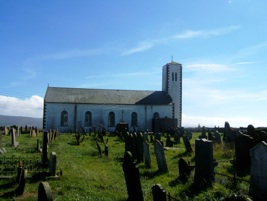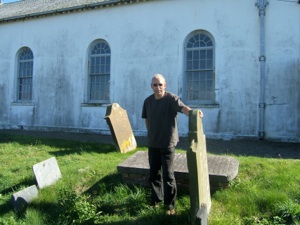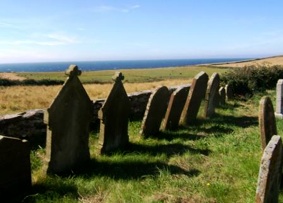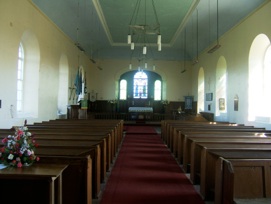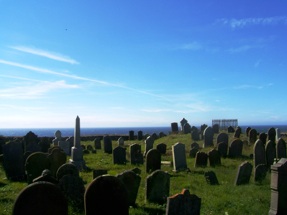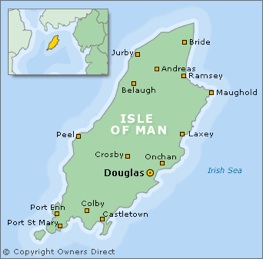the moughtin page
A QUESTION FOR 2017
The senior first officer on the Cunard ship RMS Laconia in 1930 is shown as S W Moughtin RN RNR. Does anyone know who this Moughtin is?
A special welcome for any visiting Moughtin
(or Moughton or Mughtin or Mortin or Morton)
So how do you pronounce "Moughtin"
Well, in our family we say More-tin, rhyming (almost) with Aughton - where we live.
Over the years some branches of the family, weary of spelling out their name to incredulous call centre staff on the Indian subcontinent, have anglicised the spelling to Mortin.
Sensible but lacking the glamour!
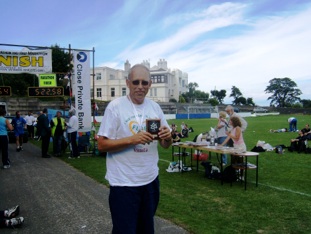
Talking of glamour, here I am receiving my plaque for the remarkable achievement
of coming 2nd in the IOM half marathon in 2005.
(Over 55 category, I reluctantly add)
A major event in my life because I was introduced to the rapturous Manx crowd
as one of their own, - Ross Muck-tin, with a guttural ck.
At last, the definitive pronunciation.
The Moughtin's come from Jurby, a parish to the far north of the Isle of Man,
renown for its RAF base, Jurby junk and the new prison.
The parish church of St Patrick, built in 1814 using materials from earlier churches, is adjacent to an ancient Norse burial site, as shown by the mound. There has been a church here from at least the tenth century and probably much earlier.
The graveyard, facing the sea, has many Moughtin's.
Here am I alongside the grave of my great-great-great grandparents, James and Ann Moughtin, who died in 1865 and 1878.
Good folk.
So who were the Moughtin's? and why should 20 August be Moughtin Day?
The Manx Note Book of 1886 says that Moughton and Moughtin are possibly derived from the diminutive of Mochta.
And who is Mochta?
St Mochta was a disciple of St. Patrick. A native of Britain, he was made a Bishop by Pope Leo I and founded the monastery at Louth in Ireland. He died at the age of ninety on 20 August, 535, the last known disciple of St. Patrick.
Two reasons why I agree with A W Moore who wrote the note book:
1 St Patrick stopped in the IOM as he travelled from Britain to Ireland, at Jurby. This is attested, I believe, by the dedication of the church at Jurby to him. (It is virtually impossible, even today, to change the patronal name of a church usually given for local reasons).
Remember priests in the Celtic tradition could marry and it seems plausible that Patrick recruited followers from the north of the IOM, whose families would then be known by this connection.
2 It makes me feel holy.
Moughtin’s I met on the IOM
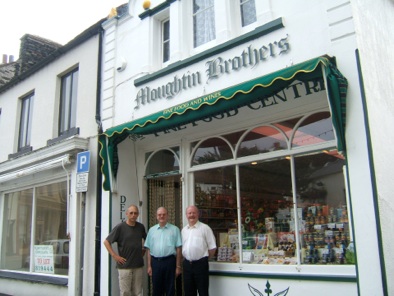
It's not often you see the name Moughtin on display for all to see.
Here I stand with the Moughtin brothers, Kim and Mark, outside their high-class grocers shop in Ramsey, IOM.
They pronounce their name Mortin - but it seems that the locals in Ramsey call it Mug-tins!
You can read about their shop here
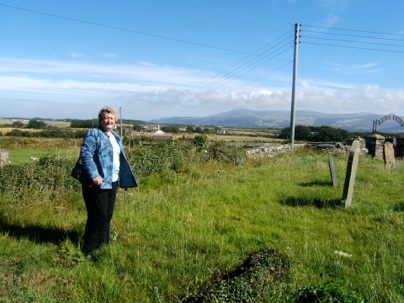
Pam Moughton (as she was then) was a great help.
Not only did she patiently wait for me to finish the half marathon but she gave me a personal tour of the Jurby area and here, Kirk Patrick graveyard
We’re now in 2018 and I bump into Andy, a fellow Moughin, serving cappuccinos for the TLG charity at the New Wine Christian holilday week. We share great grandparents
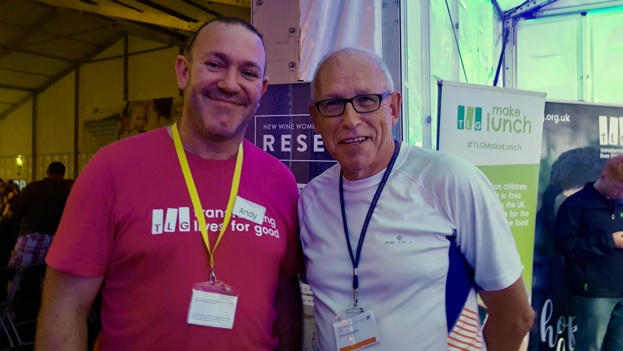
Later in the summer of 2018 we are delighted to meet up with Jon and Liz in Melbourne, South Australia. Liz is one of those privileged people with Moughtin DNA through her mother.

There are basically two ways of researching the Moughtin family tree
The first is to diligently go through the historical documents, using various websites and genealogical search engines. . This may also mean trudging through the snow in Toronto to inspect copies of Moughtin wills as recorded in the nearby Mormon Family History Centre or to cross continents from New Zealand to visit the Registrar of Births and Deaths in Liverpool . Then to patiently sift the evidence, consult with other dedicated genealogists and then lay out your conclusions as accurately as you can.
The second is to find a not-too-distant cousin who has done all the work and then simply insert your name - and your father's - at the bottom of their carefully researched tree.
I chose the latter.
To view our Moughtin genealogy back to 1650 click here.
To view an expanded genealogy back to 1650 click here
